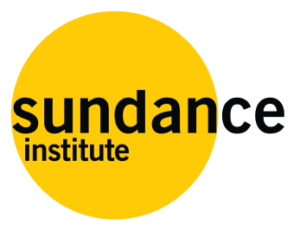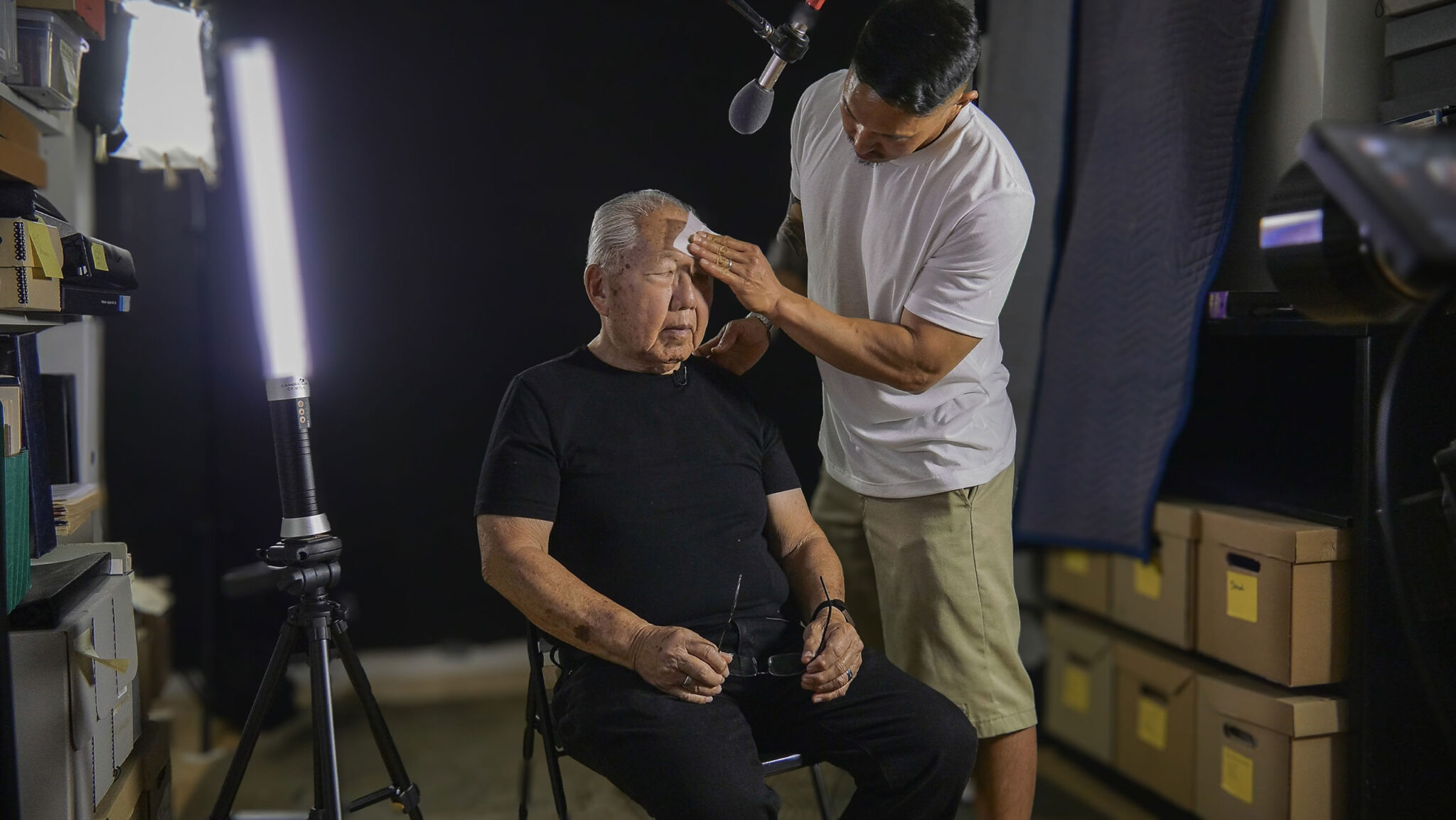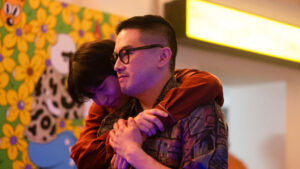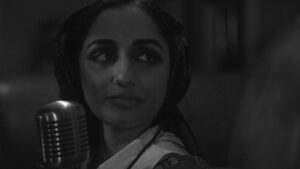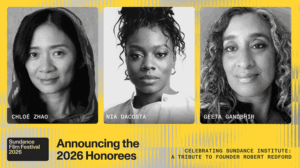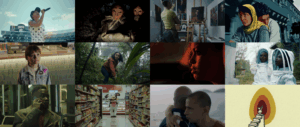By Lucy Spicer
Editor’s note: We are deeply saddened by the passing of Robert A. Nakamura, a trailblazer in Asian American cinema and the subject of “Third Act” directed by his son. Nakamura’s groundbreaking work as a filmmaker, educator, and activist paved the way for generations of Asian American storytellers. His legacy lives on through the communities he built, the students he mentored, and the family who lovingly shared his story on screen. Nakamura would have turned 89 years old on July 5. We are honored to have celebrated his life at the 2025 Sundance Film Festival.
One of the most exciting things about the Sundance Film Festival is having a front-row seat for the bright future of independent filmmaking. While we can learn a lot about the filmmakers from the 2025 Sundance Film Festival through the art that these storytellers share with us, there’s always more we can learn about them as people. We decided to get to the bottom of those artistic wells with our ongoing series: Give Me the Backstory!
When your father is known as “the godfather of Asian America media,” filmmaking plays a pivotal role in your life. That’s the case for director Tadashi Nakamura, son of Robert A. Nakamura, whose accomplishments include such historic films as Hito Hata: Raise the Banner — the first film made by Asian Pacific Americans about Asian Pacific Americans. In Tadashi’s film Third Act, which premiered in the U.S. Documentary Competition at the 2025 Sundance Film Festival, the director explores his father’s life and career, including the years of his childhood spent in an American concentration camp during World War II. Third Act was a deeply personal project, especially as Robert’s health declined after he was diagnosed with Parkinson’s disease. But Tadashi also recognizes how widely his family’s story could reach — and how urgent his father’s story is at this moment.
“This story needs to be told now because it resonates deeply with the challenges of our current political and social climate, where history is tragically repeating itself,” says Tadashi. “The echoes of past injustices are loud and clear in the present-day realities of deportation centers, detention centers for migrant children, ICE raids, anti-Muslim legislation and attacks, and the rise in violent attacks and discriminatory legislation targeting the queer and trans community. These systemic oppressions are creating new generations of individuals who will grapple with the same struggles my dad faced — self-hatred, internalized racism, cultural assimilation, and, as he puts it, ‘trying to be whiter than white.’”
He continues, “The trauma and violence being inflicted on communities today will have lasting impacts, perpetuating cycles of historical trauma and identity struggles that extend across generations. This film is a reflection on those cycles, exploring how they shape families and communities while also offering a path forward through art, activism, and healing.”
Read on to learn more about Third Act and the Nakamuras, including which of Robert’s works inspired Tadashi to create a documentary about his father and how Tadashi navigated the filming process as both a director and a son.

What was the biggest inspiration behind this film?
The biggest inspiration behind this film was my dad, Robert A. Nakamura, and his 1976 film, Wataridori: Birds of Passage. That documentary chronicled the lives of three Issei — the first generation of Japanese immigrants in the U.S. — including my Jichan (grandfather). Watching it as a teenager transformed the way I saw my Jichan. He wasn’t just the cuddly old man that I knew but also a hardworking gardener, a judo master, and a migrant who endured profound hardships, including incarceration in a Japanese American concentration camp during WWII. The film allowed me to connect with him on a deeply personal and emotional level, giving me a new appreciation for the struggles that shaped my family’s history.
That experience planted a seed in me. I wanted to give my kids the same gift that Wataridori gave me — a way to understand his heritage, his grandfather, and the sacrifices and resilience that made his life possible.
This film became my way of honoring my dad while also creating something lasting for my kids and future generations. It wasn’t just a tribute to my father but a testament to the power of film to connect us to our past, our families, and our shared struggles as a community.
I also wanted my dad’s work and legacy to be firmly recognized in the canon of Asian American cinema and history. My father has profoundly shaped the world of Asian American filmmaking. While he is celebrated within his generation of Asian American filmmakers and the Japanese American community, I felt a responsibility to ensure his story reached beyond those circles. I wanted younger Asian Americans and the broader documentary world to know who he was and to understand the immense impact he has had.
This film was also deeply personal because it gave me one last opportunity to work with my dad. Over the years, we have been a filmmaking team — his vision and experience paired with my hunger to execute and learn. As he entered his 80s, I watched him slow down with age and realized how much I still depended on him as a filmmaker and as a father. I wanted to collaborate with him intimately one last time, capturing his wisdom and creativity before it was too late.
More than anything, I wanted this film to be a way of thanking my dad for everything he has given me. I wanted to show him how much I love and appreciate him and to let him know how proud I am to be his son. One of the original questions driving this project was, “How do you repay someone who has given you everything?” This film became my answer. I wanted him to know that he has done a good job — as a father, mentor, and filmmaker — and that I am committed to carrying on his mission of using film to document and preserve the stories of our community.
Films are lasting artistic legacies; what do you want yours to say?
I want this film to explore the profound impact of historical trauma and the ways in which living in a racist society can shape a person’s sense of self and belonging. I want to show how racism can erode self-worth, rob people of their pride, and create an enduring feeling of never truly being accepted by society. Like Parkinson’s disease, historical trauma may not have a definitive cure. The best we can do is find ways to cope, heal, and strive to lessen its impact on the next generation.
Using my dad’s story — and my own — I want to illustrate how art, activism, and community-building can become tools for processing historical and intergenerational trauma. Filmmaking, in particular, has been a way for me to make sense of what has happened in my life, how I see myself, and the role I can play in transforming the world around me. For my dad, photography and film were his ways of confronting the pain of growing up in a concentration camp and navigating a society that continually marginalized him. For me, continuing his legacy has been both an act of personal healing and a way to honor his contributions.
But filmmaking, as I see it, must go beyond individual expression. It must serve a larger purpose. I want this film to reflect the idea that our personal stories and struggles are part of a greater shared experience. By sharing my fears, challenges, and reflections on screen, I hope to create something that others can relate to, a space where viewers see their own lives and struggles reflected. It is this connection — the act of making others feel seen and heard — that gives filmmaking its transformative power.
In the process of making a film for your community, you create community. This reciprocal relationship is one of the most powerful aspects of filmmaking. In giving your art to others, you receive something invaluable in return: a sense of belonging. Community gives you purpose, something to serve beyond yourself. It holds you accountable, gives you something to nurture, and strengthens your sense of identity. It offers you pride, not just in your work, but in the collective story you’ve helped to preserve and share.
Through this film, I hope to build and strengthen this sense of community. I want to contribute to a legacy that not only documents our shared history but also fosters a deeper understanding of our struggles, triumphs, and humanity. Films are not just about storytelling; they are about creating something larger than ourselves, something that connects us, heals us, and reminds us that we belong.
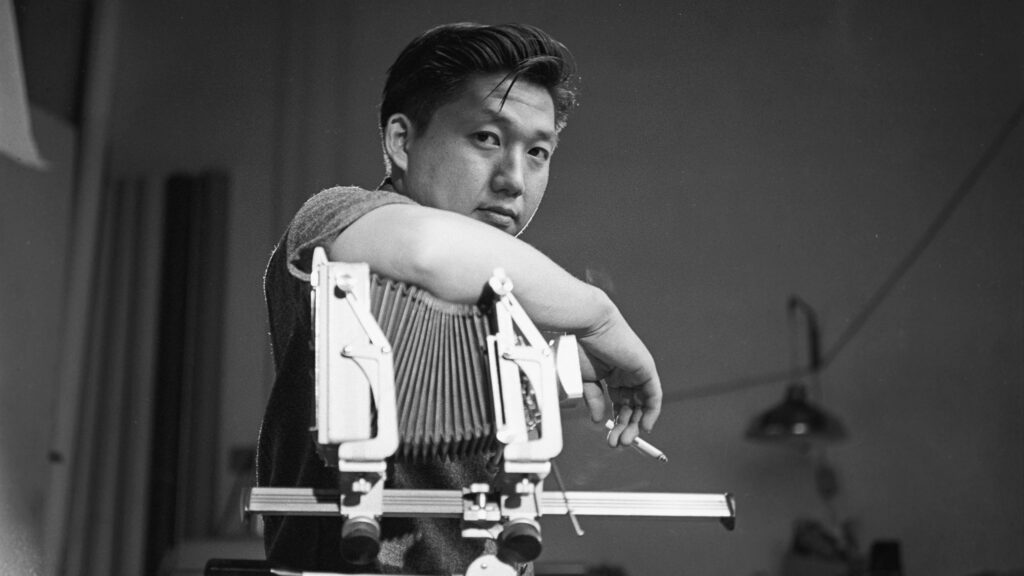
Your favorite part of making the film? Memories from the process?
My favorite part of making this film was the deeply personal and transformative journey it became for both my dad and me. While the challenges were significant, they gave rise to some of the most meaningful and memorable moments of the entire process.
One of my most cherished memories was the simple act of sitting across from my dad during interviews. These sessions, where it was just me, my dad, and the camera, became intimate spaces where we could share stories and emotions that had previously gone unspoken. As close as we are, like many Asian fathers and sons, we didn’t often express vulnerability or openly talk about our feelings. The camera acted as a buffer, allowing us to have conversations we might never have had otherwise. I asked him hard questions — not as a son, but as a filmmaker — and he responded with an honesty and openness that surprised me. These interviews turned into moments of connection that I will always treasure.
Another highlight was discovering new stories about my dad’s life. Even though I had grown up hearing about his career and his experiences, he began sharing details during filming that I had never known. These revelations deepened my understanding of who he was and the experiences that shaped him — from his childhood in a concentration camp to his struggles with post-WWII racism. Learning these things while creating the film felt like uncovering hidden layers of his life, and it gave me a renewed appreciation for him as both a father and an artist.
Writing the voiceover for the film was another favorite part of the process. It forced me to confront and articulate my own emotions about losing my dad and watching his health decline. Though it was difficult, it became a form of therapy for me — a way to process my fears, gratitude, and love for him. The writing felt like an ongoing conversation with my dad, even when we weren’t filming.
Working on this project also allowed me to see how much of my dad’s legacy I had already internalized. Initially, I approached the film as a way to preserve and honor his contributions to Japanese American cinema and activism. But through the process, I realized that his mission of using filmmaking to process trauma and foster healing was also deeply resonant for me. This alignment between his purpose and mine became a powerful source of inspiration and clarity.
Finally, the simple, everyday moments stand out as some of my favorite memories. Filming in his home, talking about the past, and sharing quiet laughs amid the more serious conversations — these moments reminded me how special it was to still have this time with him. Knowing this would be our last project together made every interaction feel significant.
Ultimately, my favorite part of making this film was the way it brought us closer together. It gave me the opportunity to truly understand and celebrate my dad, not just as a filmmaker but as a person. Those memories of collaboration, reflection, and connection will stay with me forever.
What was a big challenge you faced while making this film?
Making this film was an emotional journey that spanned seven years, during which my relationship with it evolved dramatically. The process brought both professional and deeply personal challenges, pushing me to confront fears, anxieties, and realities I wasn’t always ready to face.
Early on, one of the biggest challenges was navigating my dual roles as filmmaker and son. When my dad began opening up about his depression and his complicated feelings toward my Jichan, I had to emotionally detach to ask the difficult questions that would shape the story. As a filmmaker, I needed to uncover the deeper narrative; as a son, seeing my dad vulnerable and struggling was profoundly uncomfortable. My defense mechanism became treating him as a subject, not as my father.
Midway through production, my dad was diagnosed with Parkinson’s disease, which brought an entirely new set of challenges. The diagnosis filled me with fear and anxiety — not just for my dad’s health, but for how I could move forward in life without him. I coped by escaping into the film, treating it as a story I needed to structure rather than a reality I had to live. Even my emotions became those of “Tad,” a character in the film, rather than my own.
But denial only worked for so long. As his symptoms worsened, the gravity of the situation became impossible to ignore. I started avoiding the film altogether, procrastinating on editing and feeling overwhelmed by the sheer volume of footage and the complexity of the story still unfolding in real time. The longer I avoided the work, the more footage I accumulated, and the more daunting the task became.
Adding to the challenge was the COVID pandemic. My wife and I had our second child just as the world went into lockdown. With my dad’s compromised health, we couldn’t see him in person for five months. The separation intensified my fear of losing him, and I regretted not making more progress on the film earlier. I felt I had missed the opportunity to create the film I had always envisioned and to preserve the moments I knew were slipping away.
Eventually, as the pandemic eased, I began filming with my dad again, often just the two of us. These moments became precious. I had a new appreciation for the intimacy of the process, cherishing every conversation and every moment we shared. By then, we had been working on the film for four years, and both of us were used to the vulnerability it required. It became a space where we could honestly process his declining health, the pandemic, and even my own struggles as a father trying to make this film.
I knew that this would be the last film I worked on with my dad. Subconsciously, I felt that once the film was completed, this collaborative process we shared — and, in some ways, my connection to him — would also come to an end. Holding onto the process became my way of holding onto him.
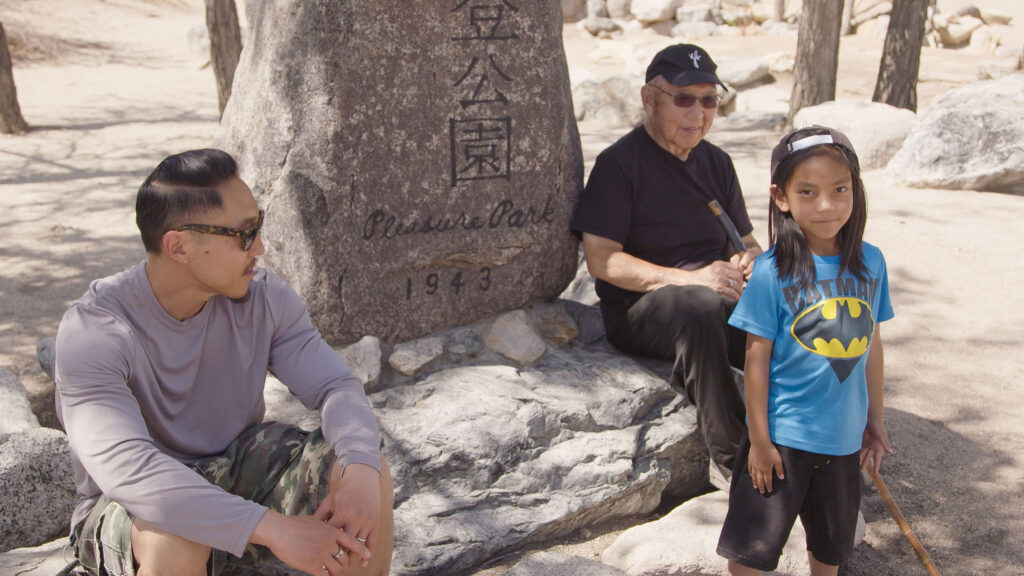
Tell us why and how you got into filmmaking.
My journey into filmmaking is deeply rooted in my upbringing and my father’s legacy. From a young age, I was immersed in the world of Asian American filmmaking and community activism. My dad, Robert A. Nakamura, was a towering figure in both realms — a fact I didn’t fully appreciate as a child. My parents often dragged me to film screenings, meetings, and events or left me to explore while they worked at places like Visual Communications and the Japanese American National Museum — both of which my dad co-founded. At the time, I saw these moments as just another part of my family’s routine, not realizing the profound impact his work had on the community.
It wasn’t until I attended UCLA as an undergraduate that I began to understand my father’s contributions. As an Asian American studies major, I encountered his name in books and classroom discussions, where he was often referred to as “The godfather of Asian American media.” Seeing his films screened in class and hearing professors discuss his pioneering activism filled me with pride and sparked my own interest in Asian American studies and student activism.
My first exposure to filmmaking came through my dad’s documentary production course at UCLA, which I initially took because I needed an easy A. It turned out to be a life-changing experience. Picking up a camera and making my first film felt natural. It became clear to me that filmmaking was a powerful tool to channel my passion for activism and building community.
As I continued working on projects — often with my dad as both mentor and collaborator — I began to see myself as a filmmaker, not just his student. His guidance and our shared experiences taught me how to weave personal and community stories into films that could resonate deeply with audiences.
Who are your creative heroes?
Prince! Which is why I named my son after him. Besides my dad, my other filmmaking heroes are Spencer Nakasako, Renee Tajima-Peña, Spike Lee, and Spike Jonze.
What was the last thing you saw that you wish you made?
Any season of Last Chance U.
Which of your personal characteristics contributes most to your success as a storyteller?
One of the personal characteristics that contributes most to my success as a storyteller is my deep dedication to carrying on my dad’s legacy of documenting and presenting stories from the Asian American community. For me, filmmaking is more than just a career or an occupation — it’s a purpose. It’s a way to honor the experiences and struggles of my family and community while contributing to a larger conversation about identity, history, and resilience. This sense of purpose drives me to approach each project with focus and intention, knowing the work has meaning far beyond myself.
I’m fortunate to be part of an incredible Asian American filmmaking community, and I recognize the power of working with others. My strength lies in creating a space where collaborators feel supported and empowered to bring their full talents and craft to a project. By fostering an environment of trust and shared purpose, I’m able to elevate the collective effort and ensure the story is told with authenticity and heart.
My success as a storyteller comes from my dedication to community, collaboration, and the understanding that storytelling is a shared endeavor — one that allows us to preserve and amplify voices that deserve to be heard.
Tell us about your history with Sundance Institute. When was the first time you engaged with us? Why did you want your film to premiere with us?
My history with the Sundance Institute began in 2002 when I attended the Sundance Film Festival for the first time. My dad premiered his short documentary Toyo Miyatake: Infinite Shades of Gray that year. It was a trip full of firsts for me — my first time seeing falling snow and my first taste of the magic and excitement of Sundance. I was captivated by the novelty of walking through snow, hopping on shuttles to venues, standing in line hoping to catch a screening, and spotting celebrities on the street. While I should say that attending my dad’s screening was the highlight, it was actually another experience that left the deepest impression on me.
I attended the world premiere of Amandla!: A Revolution in Four-Part Harmony. I was not only inspired by the film but also blown away when some of the participants broke into song during the Q&A. On my way back to Los Angeles, I recognized the director, Lee Hirsch, at the airport Burger King. I nervously approached him to tell him how inspiring his film was, and his gracious response left me thinking, “Wow, he’s just a normal guy eating a Whopper, just like me.” That interaction solidified Sundance in my mind as a place where creativity, connection, and inspiration thrived. Ever since, premiering a film at Sundance became a dream of mine.
In 2008, I had the honor of premiering my short film Pilgrimage at the Sundance Film Festival. Making that film with my dad was a pivotal experience, and its creation is actually a key moment in Third Act. Once again, while screening my film should have been the highlight of the Festival, another experience stood out. I attended the world premiere of Slingshot Hip Hop, where the Palestinian hip-hop group DAM, featured in the film, was in attendance. The energy and emotion in that theater created a viewing experience that I will never forget. Moments like that are what make Sundance such a special experience for me, not just about showcasing films but creating profound connections between art, audiences, and filmmakers.
Sundance Institute has played a critical role in bringing Third Act to life. The film received support from Sundance Institute’s Documentary Film Program, and I had the opportunity to workshop the project through the Sundance Asian American Fellowship. That support was invaluable, both personally and professionally, as I navigated the emotional and creative challenges of this project.
In many ways, Sundance has been a defining part of my filmmaking journey. My dad premiered the last film he directed at Sundance in 2002, and I premiered one of my first films there in 2008. To premiere Third Act at Sundance would be a full-circle moment, a dream realized, and a meaningful way to honor my dad’s legacy and our shared journey as filmmakers.
Who was the first person you told when you learned you got into the Sundance Film Festival?
The first person I called when I learned I got into Sundance was my dad. He didn’t pick up, so I called my mom. When I told her the news, she screamed and then said, “Wait, let me put you on speaker phone so you can tell dad!” She pressed the wrong button and hung up on me. After trying to call her back for five frustrating minutes and a little excitement lost, I finally was able to tell my dad, to which he responded with “Alriiiight!”
